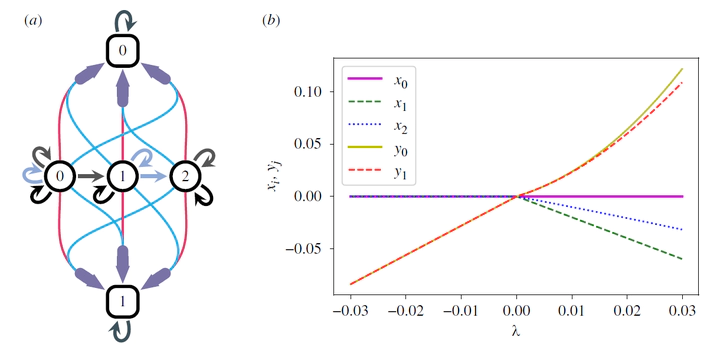Talk: Higher order interactions cause exotic dynamics, especially directed ones

Abstract
Interconnected real-world systems oftentimes contain non-pairwise interactions between agents. These groupwise interactions are referred to as higher order interactions and can be encoded by means of hypergraphs or hypernetworks. Countless works in recent years have pointed out how this structural feature crucially shapes the collective behavior. This talk will, in particular, focus on dynamics of systems with higher order interactions. We observe that the restriction to undirected higher order interactions obstructs the emergence of certain heteroclinic structures in phase space. The directed counterparts, on the other hand, do not. Motivated by this, we define a general class of directed hypernetworks and corresponding maps that respect a given interaction structure, so-called admissible maps. For this class, all robust patterns of (cluster) synchrony that a given hypernetwork supports can be classified. Interestingly, these are only determined by higher degree polynomial admissible maps. In particular, unlike in classical networks, cluster synchronization is a higher order, that is, nonlinear effect. This feature induces a novel type of “reluctant” synchrony breaking bifurcation when a high order tangency of the solution branch to a non-robust synchrony space causes formerly synchronous nodes to separate unusually slowly.